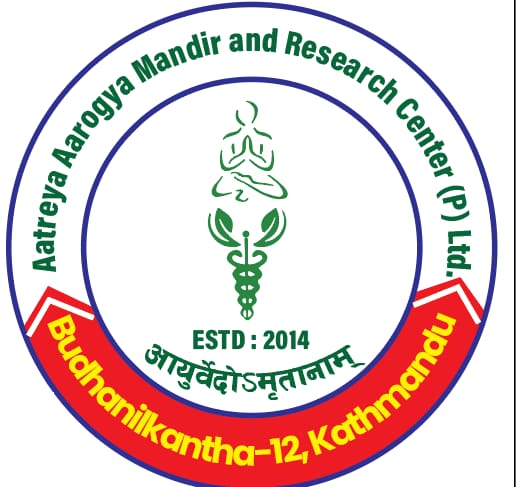Table of Contents
Bad Dietary Practices: Root cases of alarmingly increasing NCDs. Harmful Trends in Nepali Food Culture: A Comprehensive Analysis
Nepal’s traditional food culture has played a crucial role in promoting health, nutrition, and longevity. However, due to modernization, Western influence, and urbanization, many harmful dietary changes have infiltrated our food habits. These changes have led to nutritional decline, an increase in lifestyle-related diseases, and even the erosion of our cultural identity. This article discusses the key harmful trends in Nepali food culture, their consequences, and possible solutions.
Decline of Traditional Food Practices
Bad Dietary Practices: Root cases of alarmingly increasing NCDs. Nepal’s ancestral food culture was rich in locally grown grains, lentils, vegetables, ghee, and seasonal fruits, ensuring a balanced diet. However, several negative changes have emerged:
Traditional home-cooked meals are being replaced by fast food, packaged food, and processed food.
Hybrid and GMO crops, along with chemically fertilized and pesticide-laden foods, have replaced natural, organic produce.
Healthy natural ingredients like ghee, honey, and jaggery are being substituted with refined oil, white sugar, and MSG-laden foods.
Rise of Fast Food and Junk Food Culture
Bad Dietary Practices: Root cases of alarmingly increasing NCDs. Urbanization and a fast-paced lifestyle have fueled the popularity of fast food.
Foods like burgers, pizza, momos, chow mein, and fried chicken are replacing wholesome home-cooked meals.
These foods contain trans fats, excessive sodium, artificial preservatives, and harmful flavoring agents that negatively impact health.
Increased consumption of junk food is contributing to obesity, diabetes, hypertension, gastric problems, and even cancer, particularly among children and youth.
Overdependence on Packaged and Processed Foods
Bad Dietary Practices: Root cases of alarmingly increasing NCDs. Ready-to-eat and processed foods have become common due to their convenience.
Carbonated drinks, chips, chocolates, instant noodles, biscuits, and packaged yogurt are being consumed frequently.
These products contain artificial colors, chemical preservatives, excessive salt and sugar, all of which have long-term health risks.
Such foods weaken digestion, reduce immunity, and increase the risk of metabolic disorders.
Overwhelming Influence of Foreign Cuisine
Bad Dietary Practices: Root cases of alarmingly increasing NCDs. Foreign foods are gaining prominence over traditional Nepali meals.
Many people now prefer Western food over Nepali cuisine.
Traditional dishes like Sattu, Dhido, Millet Bread, Gundruk, and Sukuti are disappearing.
Foreign dishes often lack the balanced nutrition found in Nepali meals, and they are high in unhealthy fats, artificial seasonings, and excessive sodium.
Unhealthy Eating Habits
Bad Dietary Practices: Root cases of alarmingly increasing NCDs. Traditional Nepali food culture emphasized mindful and disciplined eating, but modern habits have deviated significantly.
Irregular meal timings: Unlike the structured meal schedule of the past, erratic eating habits now disrupt metabolism.
Overeating: Buffet-style meals and unnecessary snacking have led to excessive calorie intake.
Eating too quickly: Not chewing food properly affects digestion.
Distraction while eating: Watching TV or using a mobile phone while eating impairs digestion and leads to mindless overeating.
Overuse of Plastic and Contaminated Food Packaging
Bad Dietary Practices: Root cases of alarmingly increasing NCDs. Many people use plastic utensils for cooking and consume hot beverages in plastic cups, leading to microplastic contamination.
Excessive use of chemically treated tissue paper, disposable plates, and cutlery has long-term health risks.
Foods packaged in plastic containers, such as oil, milk, and yogurt, may contain harmful chemicals like BPA, which disrupt hormonal balance.
Decline of Homegrown and Organic Foods
Bad Dietary Practices: Root cases of alarmingly increasing NCDs. The culture of growing vegetables at home and consuming locally sourced food is fading.
Urban areas rely heavily on chemically treated, imported food instead of locally grown, organic produce.
Preference for foreign food over native seasonal products reduces Nepal’s food self-sufficiency and increases dependence on unhealthy, processed options.
Conclusion and Solutions
Bad Dietary Practices: Root cases of alarmingly increasing NCDs.
Promote Traditional Nepali Food
Encourage the consumption of indigenous, locally grown foods.
Support organic farming and minimize the use of chemical fertilizers and pesticides.
Reinstate traditional foods like ghee, honey, Satu, millet, Gundruk, and locally grown pulses.
Practice Healthy Eating Habits
Maintain a balanced diet with nutritious, home-cooked meals.
Reduce excessive oil, salt, and sugar intake.
Cook food using traditional methods to retain nutrients.
Improve Meal Timing and Eating Behavior
Eat meals on time and avoid skipping meals.
Practice mindful eating without distractions like mobile phones or TV.
Chew food properly to enhance digestion and nutrient absorption.
Reduce Packaged and Processed Foods
Avoid junk food, carbonated drinks, and instant processed meals.
Minimize the use of refined sugar, artificial flavoring agents, and MSG.
Prioritize Locally Sourced and Homegrown Food
Opt for organic grains, fresh vegetables, and seasonal fruits.
Support small-scale farmers by purchasing locally grown food.
In conclusion, the infiltration of harmful food trends in Nepal can be controlled by reviving traditional dietary practices and making informed food choices. “Our food defines our identity,” so let’s choose wisely and preserve the health and cultural heritage of Nepal!




